If you’d like sturdy fish with some out-of-this-world features, then check out the fancy Comet Goldfish. Named for their long forked tails and strong swimming abilities, bright-colored Comets shoot around their habitat as they explore and look for food! Is the active and energetic Comet a good choice for your aquarium or pond?
Comet Goldfish – Overview
Scientific Name
Carassius auratus
Common Name (species)
comet or comet-tailed goldfish
Family
Cyprinidae
Breed Origin
United States
Diet
Omnivore; Commercial goldfish diet supplemented with live/frozen/dried meaty treats like brine shrimp and plant foods such as algae wafers or blanched veggies
Care Level
Easy
Lifespan
5 to 114 years
Activity
Very active and strong daytime swimmer; groups of 5 or more often school together
Temperament
Peaceful, curious and social
Size Range
Juveniles usually sold when 2 to 4 inches in length, while adult Comets range from 8 to 12 inches long when mature
Tank Level
Uses the entire tank
Minimum Tank Size
40 to 50 gallons; add 50 gallons per adult goldfish
Temperature Range
60 to 80°F
Water Hardness
Not sensitive to hardness and can adjust to most types of hard or soft water
pH Range
6.0 to 8.0
Filtration/Flow Rate
Prefers very clean, filtered and oxygenated water with a minimal current
Breeding
Egglayer; relatively easy type of goldfish to breed in captivity if kept in a large pond, but challenging to accomplish in an aquarium unless very spacious
Compatibility
Best kept in a school or with other types of hearty single-tail or fancy goldfish or koi. Avoid keeping with semi or aggressive fish or small animals that could be eaten
OK for Planted Tanks?
Yes, but may uproot or consume plants, so plant a mix of fast and slow-growing species to keep your table looking sharp, and replace any plants that get damaged from their nibbles
What Makes the Comet Goldfish Unique?
The vibrant Comet Goldfish (Carassius auratus) has long been one of the most popular types in the trade, but these fish also have traits that defy the usual goldfish classification rules. While most goldfish are either hearty single-tail types or the more delicate fancy double-tails, the Comet is both a hearty and fancy breed!
- Comets have a slightly more compact body than the Common Goldfish, and their signature feature is a long, flowing tail that trails behind them like a meteorite.
- Unlike most other fancy breeds, Comets are sturdy single-tail goldfish that can live in cold water or heated aquariums and ponds!
- They’re easy to care for, but Comets are also large and very active swimmers who need more room than the typical fancy goldfish and prefer to be kept in schools of 5 or more.
History of Comet Breed
While people in Asia have been breeding goldfish for thousands of years, Comets are a newer variety and have only been around since the late 1800s. There’s still a lot about their history that remains unknown, but here are some facts about the Comet breed:
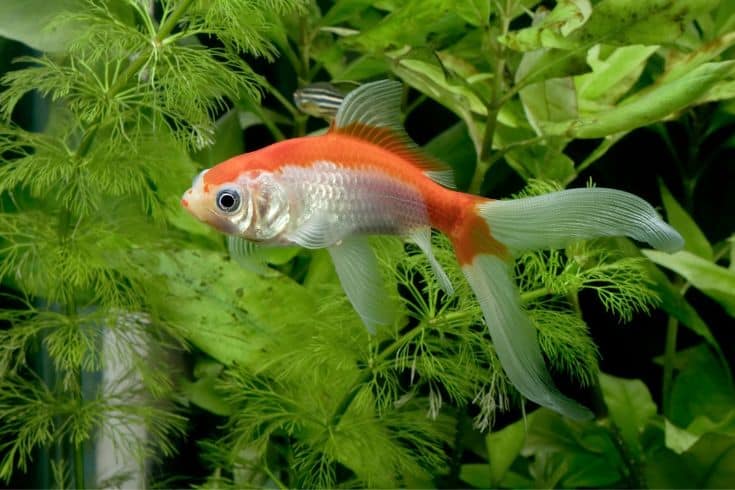
- In 1878, the newly-created US Government Fish Commission started importing goldfish from Japan and breeding them in ponds along the Washington Mall. To encourage Americans to take up the fishkeeping hobby, the Commission gave away thousands of free goldfish (including Comets) to residents of Washington DC and Baltimore.
- It’s believed that an American government worker by the name of Hugo Mulertt either bred the first line of Comets from these government-owned ponds or was responsible for introducing and popularizing the variety in the US.
- Mr. Mulertt went on to become a prolific writer and naturalist, and he published some of the first books in the US on goldfish care and breeding. He was also the person who popularized the name “Comet” for this variety, since they’re strong swimmers and are followed by those long, trailing tails.
- The Comet’s long tail may have evolved from a mutation in a fancy Ryukin or Fantail goldfish, but it’s believed they were created from a line of Common goldfish and Prussian Carp.
Comet Size and Appearance
These fancy fish are similar in size to the Common variety, and a full-grown Comet typically measures between 8 and 12 inches in length from their snout to the tip of their tail:
- Unlike the slightly leaner Common goldfish, Comets are rounder and have a deeper curve to their dorsal (spine) and ventral (abdomen) lines, but lack the extremely squat or round body usually seen in fancy breeds of goldfish.
- Their deeply forked and widely-spread caudal fin(tail) is usually about the same length as their body and is emphasized by their narrow caudal peduncle(base of the tail). So an 8-inch long Comet should have about4-inches of tail and silhouette like a sideways hourglass!
- Since they lack the other fancy features such as a double-tail, squat body, elongated pectoral fins or telescopic eyes, Comets are excellent and fast swimmers and a very hardy breed of gold is suitable for ponds and large aquariums.
Common Comet Colors
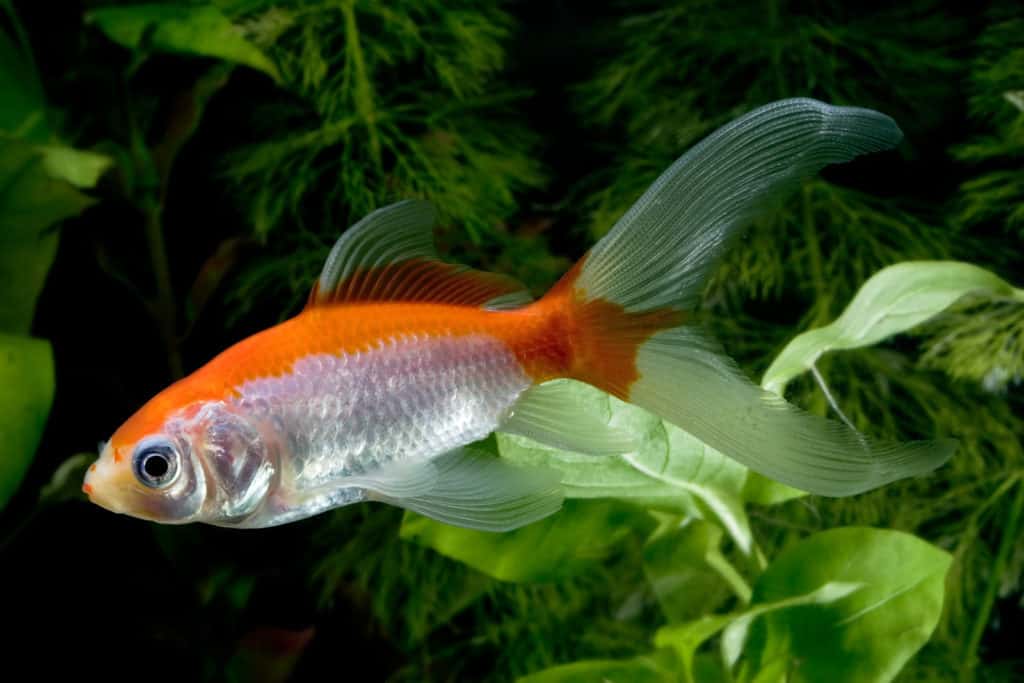
While goldfish come in a rainbow of colors and several different types of scales, Comets are always metallic (fish with nacreous scales are called Shubunkin goldfish, even if they descend from a line of Comets):
- Comets are usually self-colored (one color) or bi-colored (two colors).
- The most common colors are shades of red, orange, yellow, and white, althoughgreenandchocolateComets may also be available.
- The most popular morphs are the Bi-Colored Red and White and the extremely desirable Red-Capped Sarasa Comet, a goldfish with the coloration pattern of a koi!
Lifespan of Goldfish
With proper care and close attention to diet and water quality, Comet goldfish usually live for 10 to 15 years in a tank or pond, so they might even outlive your cat or dog companion! There have been reports of goldfish who lived into their 30s and even their 40s, so you could be caring for your school for decades.
Behavior and Temperament
Comets have the typical outgoing and curious goldfish personality, and are peaceful, if exuberant, members of their community. They are very active daytime swimmers and shoot all over your tank and even school together when kept in groups. They have a big appetite and are always looking for their next meal.
- These fancy goldfish are not aggressive, but they often jostle each other or other fish during mealtimes and they’ll definitely swallow smaller animals if they can fit them inside their mouths.
- With their long tails, Comets are less maneuverable than Common goldfish and need a bit more room to keep their tail from catching on decor.
- Comets are social fish and do best when they’re kept with other Comets, Common goldfish or Koi, rather than being kept on their own in a solo set-up.
How to Care for Your Comet Goldfish
The good news is that Comets are some of the easiest types of goldfish to care for, since they are hearty and healthier than many of the fancier varieties. Their main downside is their space requirements since Comets need a roomy habitat with a great filtration system and prefer to be kept in groups.
Comet Tank Set-up and Habitat Requirements
It can be rather pricey to start a large aquarium or pond suitable for these magnificent goldfish, but the investment is well worth the decades of entertainment they’ll provide!
Comet Aquarium Size
Comets need more room than other types of goldfish, due to their high activity levels and extra-long, flowing tail. They are an ideal choice for an outdoor pond, but they also do very well in aquariums. How big does a Comet tank need to be?
- It’s best to start with a baseline of 40 to 50 gallons for the first goldfish and then allow an additional 20 gallons for every adult fish you add to the school.
- Forbreeding aquariums, though, you’ll want at least 50 gallons per adult and bigger is definitely better.
- A school of5 Comets needs about 125 gallons of capacity. You can also start juvenile goldfish in a smaller set-up and then transition them to a bigger tank or pond as they mature.
Substrate
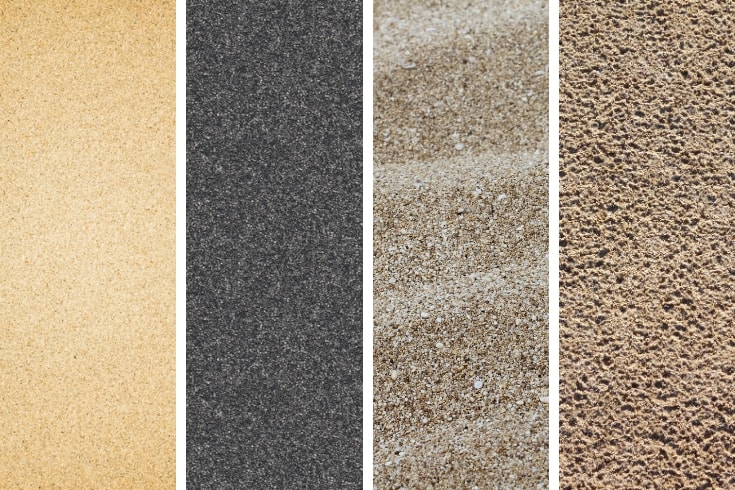
While Common goldfish mostly stay in the middle of the water column, Comets like to dart all over your tank. To prevent injuries to their long tails, it’s best to use a soft sand, aquatic soil or fine gravel substrate instead of a coarse product on the bottom of your tank.
Comet Water and Temperature Parameters
Comets are not demanding when it comes to their water parameters, but they do prefer stable and consistent conditions. Rapid shifts in temperature or pH can cause stress and lower their immune system, so be sure to make any adjustments slowly so they have time to acclimate:
- Comets do well in temperatures between 60 and 80°F, although they usually prefer cooler conditions except during their breeding season. If your home stays in this range, you may not need a heater for their tank or may only need to use it seasonally.
- Their ideal PH range is 6.0 to 8.0and they’re not sensitive to water hardness, so it’s likely your tap water will meet their needs once the chlorine/chloramine are neutralized with a water conditioner.
Filtration and Aeration
Goldfish are messy fish who produce a lot of waste, and they’re also sensitive to ammonia and other aquarium toxins. It’s critical that you have a robust filtration system in your Comet tank or pond, but they don’t like to swim in strong currents, so you may also need to adjust or baffle the filter outflow(s):
- For a large aquarium, you’ll likely need at least one and possibly several3-stage canister or HOB filters with replaceable filter media.
- Goldfish can survive in stagnant water but prefer higher oxygen levels, so consider using an air stone and pump in your tank. These devices can also help with your tank’s circulation and prevent debris from building up in the corners, too.
- Sump filters, which support large populations of nitrifying aquatic bacteria and mimic the detoxifying effects of a pond system, are an excellent option for keeping large goldfish tanks clean and healthy!
Lighting, Plants and Decorations
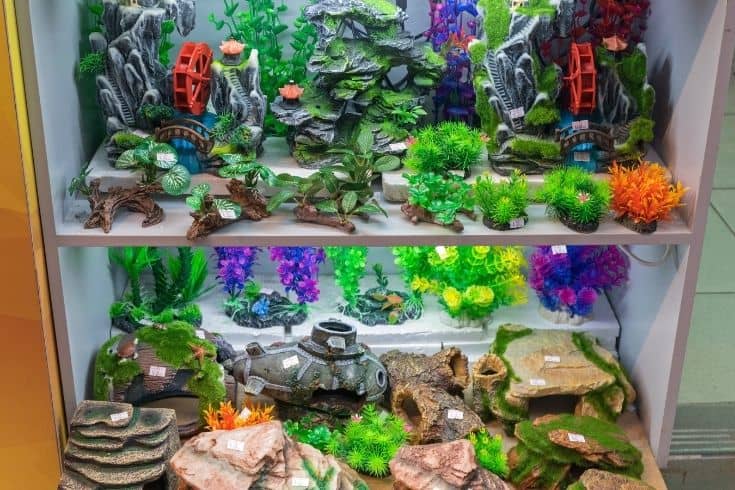
Goldfish prefer natural lighting, but as diurnal fish they don’t shy away from brightly-lit areas, so you can use any type of aquarium light for your Comet Tank. While goldfish enjoy planted habitats, they’re also known for uprooting and nibbling on vegetation, and their long tails can get tangled in densely planted sections:
- If you opt for a tank with live plants, you may want to plant a mix of low-growing species like Amazon Sword with fast-growing plants like Hornwort, so your fish have something they can snack on without causing damage.
- You can also grow floating plants like lotus along the top of your goldfish tank to make it resemble their natural pond environment!
- Don’t put your plants or decorations too close together, and leave room for your Comets to move between the scenic elements in your tank so they don’t injure their beautiful tails.
- You can also use plastic plants and any other decor that catches your fancy, whether natural or fantastical, but avoid anything with sharp or jagged edges that could catch or scrape the Comet’s fancy flowing tail.
Comet Tank Maintenance
The key to having a healthy tank of Comets is to keep their water in pristine condition. You may need to test your tank’s water quality and do weekly or frequent water changes to keep the toxins like ammonia and nitrite at undetectable levels, even if you’re using a filter.
Since you’ll be handling a lot of water to maintain a large tank of goldfish, you might find it’s easier to invest in a powered or even fully automated water change system, similar to those used for big marine reef tanks. They’re not cheap but are often well worth the expense for tanks over 100 gallons.
Feeding Comets
Comets are typical goldfish in that they have a huge appetite and are always ready for a meal! It’s really easy to overfeed these big omnivorous fish, and obesity is a common problem that can shorten their lifespan and increase their risk of developing health problems.
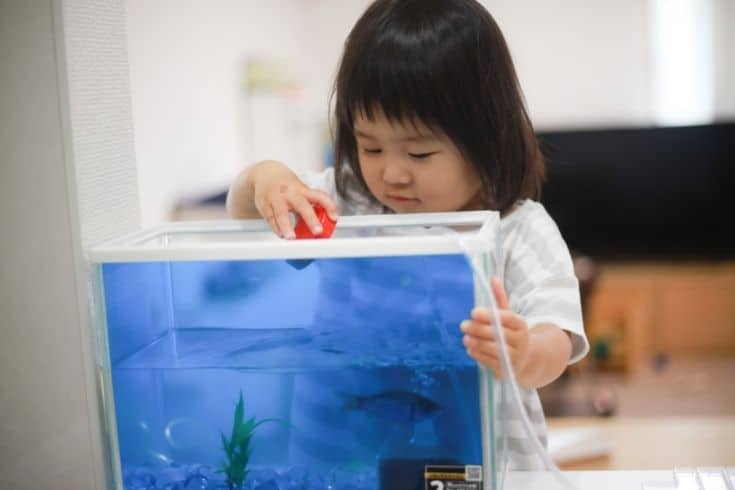
It’s best to feed your goldfish once a day and give them as much food as they can consume in a couple of minutes (a portion about the size of their eyeball). I usually fast my goldfish one day a week, and offer treats in place of a meal one to two times a week:
- Offer your fish a primary diet of high-quality commercial omnivore or goldfish-specific flakes or pellets.
- Supplementwithmeatytreatslike fresh/frozen/dried brine shrimp, bloodworms, Daphnia and shrimp eggs.
- You can also offer vegetable foods such as sinking algae wafers, spirulina pellets and freshly blanched veggies like peas, zucchini or broccoli to balance out their diet.
Comet Tank Mates
The best tank mates for Comets are other cool-water single-tailed or hearty goldfish like Commons, Shubunkin, Jinkin and Wakins. You can also keep them with Koi fish, especially if you have an outdoor pond. It’s very challenging to keep these energetic eaters with other types of tank mates, though:
- Young Comets often do well temporarily with similar-sized peaceful community fish like tetras and danios, but they’ll quickly outgrow them and may even start feeding on your smaller fish.
- Comets are not a good choice as tank mates for fancy double-tail goldfish, since these slow-moving fish can’t compete with them for food and may end up starving or becoming malnourished.
- Avoid keeping Comets with aggressive or semi-aggressive species that may prey on them, or with small freshwater snails or shrimp which could be consumed.
Breeding Comets
Comets are one of the easier types of goldfish to breed, since they’re more agile and maneuverable than the fancy double-tailed types. But it’s very challenging to breed single-tail goldfish in aquariums unless they’re spacious (at least 50 gallons per adult), and the best way to breed these beautiful fish is in an outdoor pond.
Since different types of goldfish can easily and freely interbreed with each other, if you want to produce Comet offspring, you’ll need to establish a single-species tank for your breeding school and set up a 40-gallon hatching tank for the eggs and juvenile goldfish.
Goldfish are egg layers and usually spawn in the springtime when kept outdoors. To encourage reproduction in your Comet tank, raise the temperature for a few weeks and feed your mixed-gender school a high-protein diet until they show signs that they’re ready to breed:
- When they’re ready to mate, male goldfish develop white pimple-like growths called breeding tubercles on their gill cover sand the leading edge of their pectoral fins and start chasing the ladies in the tank. Receptive female goldfish look very plump when they’re ready to lay their eggs.
- Place a spawning mop in your Comet breeding tank to make it easier to move their eggs to the hatching set-up, which prevents your adult fish from snacking on the eggs or delicate fry.
- Once your goldfish have spawned, carefully remove the spawning mop and place in a separate 40-gallon aquarium with a heater and sponge filter. Within 4 to 7 days the fry should hatch, and once they’re moving around you can feed them on infusoria until they’re large enough for bigger foods.
Health Concerns in Comets
Comets are one of the healthier types of goldfish and are less likely to have swim bladder problems or suffer from constipation than the fancier and more mutated varieties as long as you don’t overfeed them. Obesity is a major risk factor for sick goldfish, so be sure to provide your fish with a balanced and high-quality diet.
You can also avoid common problems like dropsy, velvet, and ich or White Spot disease with good tank hygiene and by quarantining new animals and plants in a hospital tank before introducing them to your Comet community. It’s easier to keep your fish healthy than it is to treat them for a problem, so keep up on your water changes and routine maintenance if you want a healthy tank of Comets!
How to Set Up a Comet Goldfish Tank: Supply and Equipment List
While Comets are a great choice for pond settings, you can certainly keep them in a large aquarium as long as you have adequate filtration and do frequent water changes. To set up a basic tank for a school of 5 Comets, you’ll need the following:
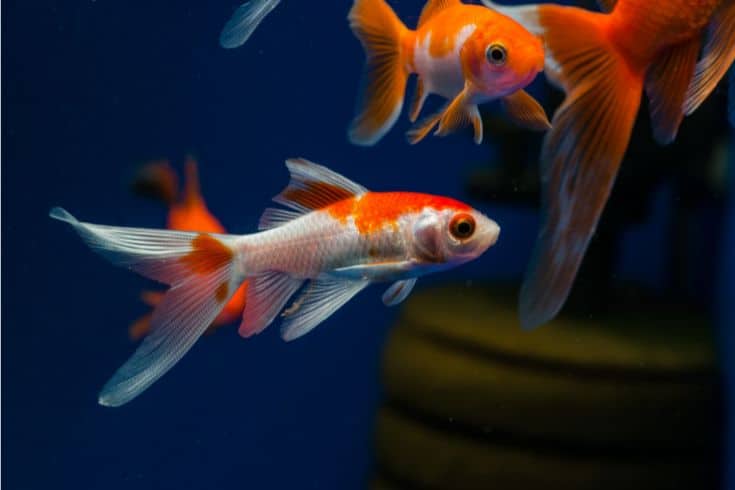
- 125+ gallon aquarium with a stand, cover and light fixture
- Two or more HOB or canister filters or a combination of systems
- Sand, fine gravel or aquatic soil substrate
- Temperature gauge
- Air stone or bubbler device and an air pump
- Live or plastic plants and your decor of choice
To care for your goldfish tank, you’ll want to get the following:
- Water conditioner
- Water testing kit (pH, ammonia, nitrite)
- Hose system, gravel vacuum and bucket for water changes and routine maintenance
- Replacement filter media
To feed your school of Comets, you’ll need the following:
- Commercial goldfish or omnivore food
- Treats like protein-rich brine shrimp and bloodworms and plant foods such as algae wafers or freshly blanched veggies
Some optional but useful equipment for a Comet Tank includes:
- Aquarium heater
- UV sanitizer
- Sump filter
- CO2injection system or plant fertilizers
- Automatic water change pump or powered hose system
- Moonlight for nighttime viewing
Conclusion
Have you decided to catch a falling star and start an aquarium for Comet Goldfish? We’d love to hear about your experiences with these magnificent fish, so toss a comment below or make a splash on our social media sites. Comets are some of the easiest goldfish to care for and are a great option for beginners and novice fish keepers!